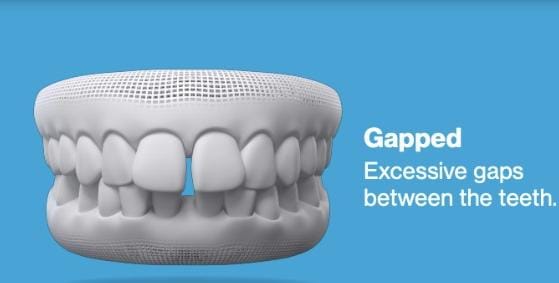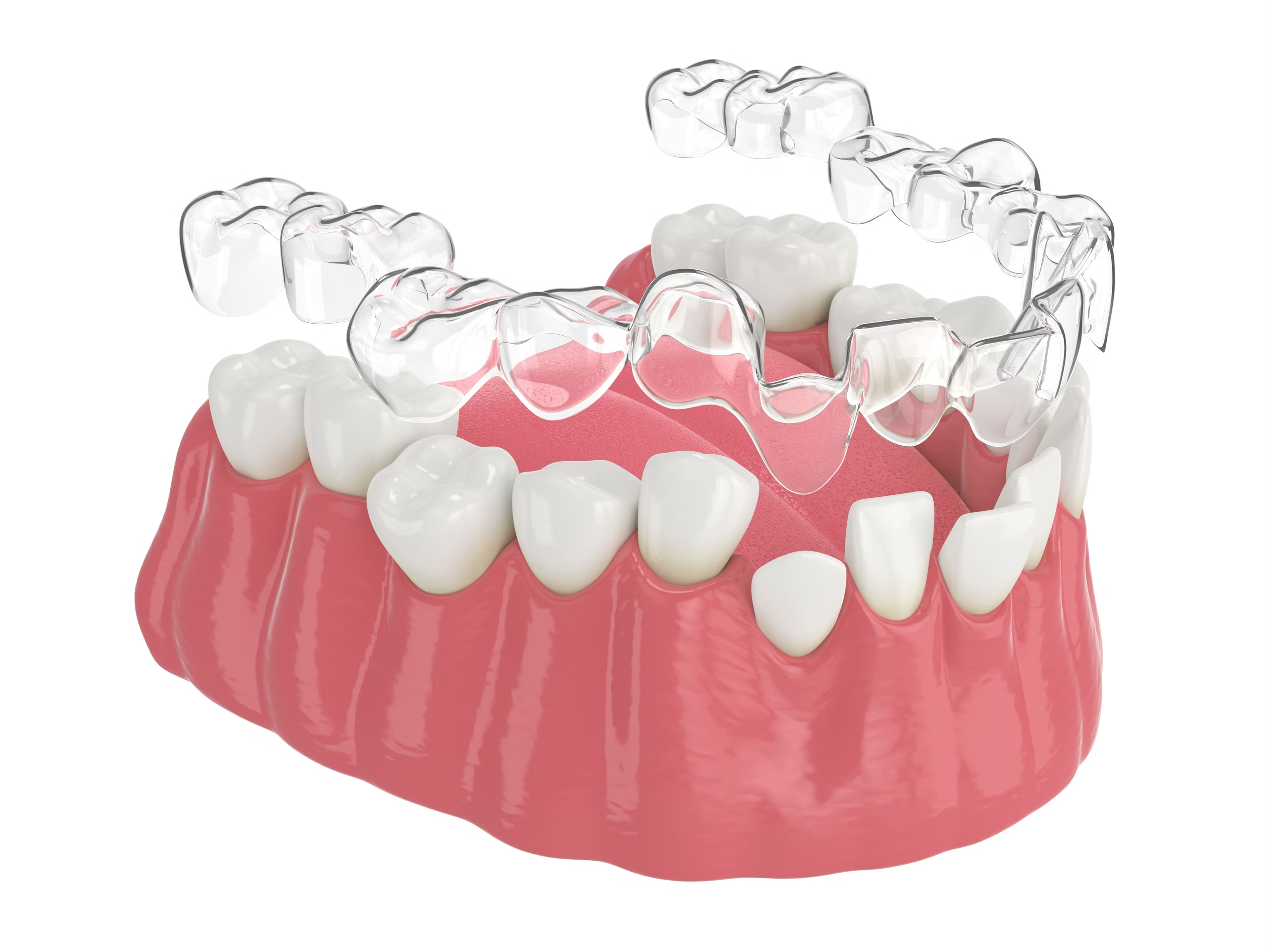The Rise of Aligner Treatment in Modern Orthodontics
Introduction: The Rise of Aligner Treatment in Modern Orthodontic
In recent years, aligner treatment has revolutionized the field of orthodontics, offering a discreet, comfortable, and effective alternative to traditional metal braces. Clear aligners are a series of custom-made, transparent trays that gradually shift teeth into their ideal position. Unlike conventional braces, which use brackets and wires, aligners are removable and virtually invisible, making them a preferred choice for many individuals looking to straighten their teeth without drawing attention to their treatment
What is Aligner Treatment?
Aligner treatment is an orthodontic process designed to correct misaligned teeth using custom-fitted, clear plastic trays. These trays are digitally designed based on 3D scans of the patient’s teeth, ensuring a precise and gradual adjustment. Patients typically receive a series of aligners that they wear for 20-22 hours a day, changing to a new set every one to two weeks as their teeth shift progressively. The entire treatment process can take anywhere from 6 to 18 months, depending on the severity of the case.
The Growing Popularity of Clear Aligners
The demand for clear aligners has surged significantly in the last decade, thanks to advancements in digital orthodontics and a growing preference for aesthetic dental solutions. Leading brands like Invisalign, Clear Correct have made aligner treatment more accessible than ever. Some key factors contributing to this popularity include:
- Discreet Appearance – Aligners are nearly invisible, making them ideal for professionals, teenagers, and adults who want to avoid the look of metal braces.
- Comfort & Convenience – With no brackets or wires to cause discomfort, aligners offer a more comfortable experience compared to traditional braces.
- Removability – Unlike fixed braces, clear aligners can be removed for eating, drinking, brushing, and flossing, making oral hygiene easier to maintain.
- Fewer Dental Visits – Patients using aligners require fewer in-office visits, as the treatment is designed to progress with minimal orthodontist intervention.
Who Can Benefit from Aligner Treatment?
Clear aligners are suitable for individuals with mild to moderate misalignment issues, including:
- Crowded teeth
- Spacing (gaps between teeth)
- Overbites, underbites, and crossbites
- Mildly rotated teeth
However, patients with severe misalignment, complex bite issues, or jaw-related problems may require traditional braces or other orthodontic treatments. A consultation with an orthodontist is essential to determine if aligners are the right option.
What This Article Covers
 Gapped Teeth
Gapped Teeth
This comprehensive guide explores everything you need to know about aligner treatment, including:
- How aligners work
- Benefits and challenges of clear aligners
- Comparisons between aligners and traditional braces
- Cost considerations and treatment timelines
- Real before-and-after results from aligner users
How Do Clear Aligners Work? A Step-by-Step Guide
Clear aligners have revolutionized orthodontic treatment, offering a discreet, comfortable, and effective alternative to traditional braces. These custom-made trays gradually move teeth into their ideal position using controlled force. Below is a detailed step-by-step guide on how clear aligners work, from consultation to final results.
Step 1: Consultation and Assessment
Before starting aligner treatment, a consultation with a dentist or orthodontist is necessary to determine if you're a good candidate.
✅ Oral Examination – The dentist assesses your teeth alignment, bite, and overall oral health.
✅ X-Rays & Scans – A full-mouth X-ray or panoramic scan provides a detailed view of your teeth and jaw.
✅ Eligibility Check – Clear aligners are ideal for mild to moderate misalignment issues, such as:- Crowded teeth
- Gaps between teeth
- Overbite, underbite, or crossbite (mild cases)
✅ Discussion of Treatment Options – The provider explains how the aligners will work, the estimated timeline, and the cost.
💡 Tip: Some brands offer free virtual assessments to check eligibility before an in-person visit.
Step 2: 3D Digital Scanning & Treatment Planning
Once you're approved for aligner treatment, the next step is creating a customized treatment plan using advanced digital technology.
✅ 3D Scanning or Impressions – A digital scan of your teeth is taken using an intraoral scanner, or traditional impressions are made.
✅ AI-Driven Treatment Simulation – Software generates a step-by-step preview of tooth movement, showing how your smile will change over time.
✅ Number of Aligners & Duration – Based on the scans, your orthodontist will determine how many aligners are needed and how long the treatment will take.
✅ Approval & Payment – Once satisfied with the plan, you approve it, and your aligners are sent for manufacturing.💡 Tip: Many clinics allow you to see a before-and-after simulation before approving the treatment plan!
Step 3: Receiving Your Aligners & Treatment Monitoring
After your aligners are manufactured, you will receive your first set and instructions on how to wear them.
✅ Wearing Aligners Properly – Aligners must be worn 20-22 hours per day for effective results.
✅ Aligner Schedule – You will switch to a new set every 1-2 weeks, depending on your treatment plan.
✅ Managing Initial Discomfort – Some pressure or discomfort is normal in the first few days as teeth start shifting.
✅ Checkups & Virtual Monitoring – Progress is monitored with in-person visits or remote check-ins via an app every 4-6 weeks.
Step 4: Expected Timeline for ResultsAligner
The time required for aligner treatment varies depending on the complexity of the case.
📌 Mild cases (small gaps or minor crowding) – 3-6 months
📌 Moderate cases – 6-12 months
📌 Severe cases – 12-24 months (may require additional refinements)After completing the treatment, retainers are required to prevent teeth from shifting back.
✅ Types of Retainers – Fixed (permanent) or removable (Essix, Hawley, Vivera)
✅ Wear Schedule – Full-time for the first few months, then only at night💡 Tip: Failing to wear retainers can cause teeth to shift back, requiring further treatment!
Clear aligners provide a convenient and nearly invisible way to straighten teeth when used consistently. The key to success is wearing them as instructed, attending follow-ups, and maintaining good oral hygiene.
3. Benefits of Aligner Treatment  Aligner
Aligner
- Aesthetic advantages (virtually invisible)
- Comfort and convenience (removable vs. fixed braces)
- Easy maintenance and hygiene benefits
- Fewer dental visits compared to traditional braces
- 6. Common Challenges & How to Overcome Them
- Discomfort and soreness
- Adhering to 22-hour wear time
- Cleaning and maintaining aligners
- Speech difficulties during the adjustment phase
7. Aligner Treatment vs. Braces: Which Is Better?
- Pros and cons of aligners vs. traditional braces
- Best options based on severity of misalignment
8. Real Results: Before & After Aligner Treatment
- Case studies or testimonials from patients
- How long it takes to see results
- Retention phase (importance of retainers post-treatment)
Contact Us:
Related Articles
Misaligned Teeth Treatment Guide
Misaligned Teeth Treatment Guide: Learn How Ceramic Braces Work? Introduction Misaligned teeth, also known as malocclusion, can affect both aesthetics and oral health. Crooked or crowded teeth may lead to difficulty chewing, speech problems, and an ...Receding Gums Treatment Guide
Receding Gums Treatment Guide Introduction Receding gums, also known as gum recession, occur when the gum tissue surrounding the teeth pulls back, exposing the tooth roots. This can lead to sensitivity, tooth decay, and even tooth loss if left ...Tooth Abrasion: Causes, Treatment, and Prevention
Tooth Abrasion: Causes, Treatment, and Prevention for Healthier Teeth Introduction Tooth abrasion is a common dental issue that affects people of all ages. It occurs when the enamel, the protective layer of the teeth, gradually wears away due to ...Bruxism Treatment Guide
Bruxism Treatment Introduction Bruxism, commonly known as teeth grinding or jaw clenching, is a condition that affects millions of people. It can occur during the day (awake bruxism) or at night (sleep bruxism) and may lead to serious dental ...Bad Breath Treatment Guide
Introduction Bad breath, or halitosis, is a common problem affecting millions of people worldwide. It can be embarrassing and may indicate underlying health issues. Understanding the causes, symptoms, and treatment options for bad breath can help you ...